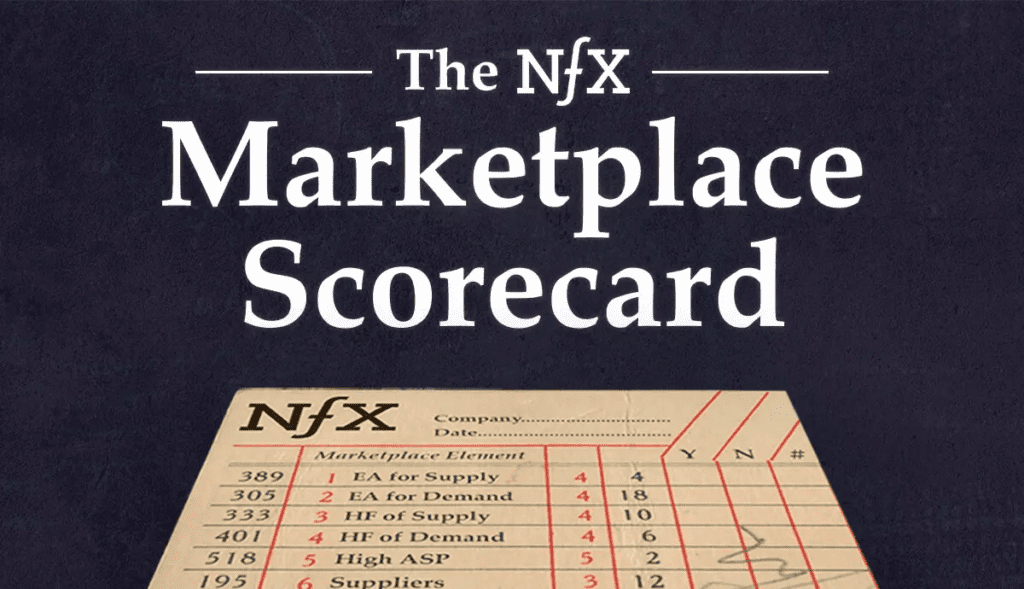How much does it cost to start a podcast?
Here are some general cost estimates for starting a podcast:
Microphone: A good quality microphone is crucial for producing a professional-sounding podcast. You can find decent microphones for as little as $50, while more high-end microphones can cost several hundred dollars.
Audio Interface or Mixer: If you plan on recording with a microphone that connects via XLR, you’ll need an audio interface or mixer to connect it to your computer. These can cost anywhere from $50 to $500, depending on the features you need.
Recording and Editing Software: There are numerous free and paid options for recording and editing software. Audacity is a popular free option, while Adobe Audition and Logic Pro X are more expensive but offer more advanced features.
Web Hosting: You’ll need a hosting service to store and distribute your podcast episodes. Services like Libsyn and Buzzsprout offer plans starting at around $12 per month.
You can expect to spend anywhere from a few hundred to several thousand dollars to start a podcast, depending on your equipment and software choices. However, it’s also possible to start a podcast with minimal equipment and a shoestring budget if you’re willing to compromise on some of the bells and whistles.
What are the most popular tools for podcasters?
Microphones: Popular microphone brands include Shure, Audio-Technica and Blue. Some popular microphone models for podcasting include the Shure SM7B, Audio-Technica AT2020 and Blue Yeti.
Audio Interfaces: The Focusrite Scarlett series, Universal Audio Apollo Twin and PreSonus Studio Series are popular choices for connecting microphones to a computer.
Hosting Platforms: Buzzsprout, Podbean and Spotify Podcasts are popular platforms for hosting and distributing podcast episodes.
Analytics Tools: Tools like Podtrac, Chartable and Blubrry provide analytics for podcast downloads, listens and engagement.
Remote Recording Tools: Zencastr, SquadCast and Riverside.fm are popular tools for remote podcast recording.
Editing and Production Services: If you don’t have the time or expertise to edit your podcast, there are editing and production services available like Alitu.
What are the most popular platforms to host a podcast?
Libsyn: Libsyn is one of the most popular podcast hosting platforms, offering plans starting at $5 per month. It provides advanced statistics, unlimited storage and bandwidth and automatic distribution to various podcast directories.
Buzzsprout: Buzzsprout is another popular podcast hosting platform, with plans starting at $12 per month. It provides detailed analytics, easy-to-use publishing tools and automatic distribution to popular podcast directories.
Podbean: Podbean offers plans starting at $9 per month and includes features like customizable podcast websites, monetization options and analytics.
Anchor: Anchor is a free podcast hosting platform owned by Spotify, which includes tools for recording, editing and publishing. It also offers monetization options and analytics.
Simplecast: Simplecast offers plans starting at $15 per month and includes features like customizable podcast websites, automatic distribution and detailed analytics.
What kinds of podcast formats are there?
Interview: In this format, the host interviews a guest on a particular topic or theme. This is a popular format for educational and informational podcasts.
- “WTF with Marc Maron” – Host Marc Maron interviews celebrities and notable figures in the entertainment industry.
- “Armchair Expert with Dax Shepard” – Host Dax Shepard interviews guests from various industries, including entertainment, sports and politics.
- “The Joe Rogan Experience” – Host Joe Rogan interviews a wide range of guests, including scientists, authors, athletes and comedians.
Narrative: Narrative podcasts tell a story or series of stories, often with a journalistic or documentary-style approach. They can be fictional or non-fictional and are often highly produced with music and sound effects.
- “Serial” – Host Sarah Koenig tells a true crime story over multiple episodes, diving deep into the details of the case and exploring the various angles and perspectives.
- “Radiolab” – Hosts Jad Abumrad and Robert Krulwich present stories that blend science and philosophy, exploring the human experience in surprising and thought-provoking ways.
- “S-Town” – Host Brian Reed tells the story of a man who contacts him to investigate a murder in his small Alabama town, only to uncover a web of secrets and mysteries.
Solo: In a solo podcast, the host speaks alone on a particular topic or theme. This is a good format for opinion-based podcasts or those that are focused on personal development or self-help.
- “The Daily” – Host Michael Barbaro presents daily news updates and in-depth analysis of current events from The New York Times.
- “The GaryVee Audio Experience” – Entrepreneur Gary Vaynerchuk shares his insights and advice on business, social media and personal growth in a solo format.
- “Hurry Slowly” – Host Jocelyn K. Glei explores the intersection of creativity, productivity and mindfulness in a series of solo episodes.
Panel: In a panel format, the host and a group of guests discuss a particular topic or theme. This can be a good format for podcasts that want to offer multiple perspectives on a topic.
- “Pod Save America” – A political podcast hosted by former Obama administration staffers Jon Favreau, Dan Pfeiffer, Jon Lovett and Tommy Vietor, featuring guest experts and analysts.
- “The View” – A daytime talk show on television featuring a panel of women discussing news and current events, as well as celebrity interviews and pop culture discussions.
- “The Weeds” – A political podcast featuring Vox journalists Matthew Yglesias, Jane Coaston and Dara Lind, who discuss policy and politics with guest experts and analysts.
Roundtable: In a roundtable format, the host and guests have a more casual discussion on a particular topic or theme. This format is often used in comedy or entertainment podcasts.
- “The Roundtable Podcast” – Hosted by Dave Robison, this podcast features roundtable discussions with authors and other creative professionals on various writing and publishing topics.
- “The Film Roundtable” – Hosted by film critics and journalists, this podcast features roundtable discussions on current and classic films, as well as interviews with filmmakers and actors.
- “The Table Round” – Hosted by journalist Rachel Thomas, this podcast features roundtable discussions with experts and analysts on topics related to the future of work, including remote work, automation and the gig economy.
How to find the first listeners for your podcast?
- Leverage your existing network: Share your podcast with friends, family and colleagues and ask them to share it with their networks as well. You can also promote your podcast on your personal social media accounts and in relevant online communities.
- “How I Built This with Guy Raz” – Host Guy Raz leveraged his existing network of contacts as a journalist to invite successful entrepreneurs onto his podcast, which helped him build a large and engaged audience.
- “The Tim Ferriss Show” – Host Tim Ferriss used his network of high-profile guests, many of whom are successful entrepreneurs, authors and athletes, to help promote his podcast and grow his audience.
- “Entrepreneur on Fire” – Host John Lee Dumas used his network of successful entrepreneurs to invite guests onto his podcast and then encouraged those guests to share their episode with their own networks, helping him rapidly grow his audience.
- Collaborate with other podcasters: Reach out to other podcasters in your niche and explore opportunities to collaborate, such as guest appearances or cross-promotion.
- “Armchair Expert with Dax Shepard” – Host Dax Shepard invites celebrity guests onto his podcast, many of whom have their own large and engaged audiences, helping him to attract new listeners to his show.
- “Conan O’Brien Needs a Friend” – Host Conan O’Brien invites celebrity guests onto his podcast, leveraging his existing network of contacts in the entertainment industry to attract listeners who are fans of his guests.
- “SmartLess” – Hosts Jason Bateman, Sean Hayes and Will Arnett invite celebrity guests onto their podcast, using their existing networks in the entertainment industry to attract listeners who are fans of their guests.
- Optimize your podcast for search: Make sure your podcast is optimized for search engines by including relevant keywords in your title, description and show notes. This will help potential listeners discover your podcast when searching for related topics.
- “Entrepreneur on Fire” – Host John Lee Dumas optimized his podcast for search by focusing on specific keywords related to entrepreneurship and business, which helped him to rank high in search results and attract new listeners who were searching for that type of content.
- “The GaryVee Audio Experience” – Entrepreneur Gary Vaynerchuk optimized his podcast for search by using keywords related to marketing, social media and personal development in his titles and descriptions, which helped him attract new listeners who were searching for those topics.
- “Online Marketing Made Easy with Amy Porterfield” – Host Amy Porterfield optimized her podcast for search by using keywords related to online marketing, social media and business in her titles and descriptions, which helped her attract new listeners who were searching for that type of content.
- Offer incentives: Consider offering incentives, such as exclusive content or discounts, to encourage people to listen and subscribe to your podcast.
- “Stuff You Should Know” – Hosts Josh Clark and Chuck Bryant offered listeners exclusive access to ad-free episodes and bonus content through a membership program, which helped incentivize fans to sign up and grow their audience.
- “Radiolab” – Hosts Jad Abumrad and Robert Krulwich offered listeners exclusive access to live events, as well as bonus episodes and behind-the-scenes content, through a membership program, which helped incentivize fans to sign up and grow their audience.
How can podcasts be monetized?
Sponsorships: One of the most common ways to monetize a podcast is through sponsorships. This involves partnering with a company or brand that pays you to promote their product or service on your podcast.
- The Rich Roll Podcast – Hosted by ultra-endurance athlete and wellness advocate Rich Roll, this podcast features interviews with a wide range of guests and has been sponsored by companies like Thrive Market and Four Sigmatic.
- Code Switch – A podcast about race and identity in America, Code Switch has been sponsored by companies like Indeed and The Great Courses Plus.
- The Daily Stoic – A podcast that explores the philosophy of stoicism. The Daily Stoic has been sponsored by companies like LinkedIn and Skillshare.
Advertising: You can also monetize your podcast through advertising, either by selling ad space directly to businesses or by using an advertising network like Advertisecast or Midroll.
- “Reply All” – Hosts PJ Vogt and Alex Goldman monetize their podcast through advertisements, with sponsors paying to have their products or services promoted on their show.
- “Pod Save America” – Hosts Jon Favreau, Jon Lovett, Dan Pfeiffer and Tommy Vietor monetize their podcast through advertisements, with sponsors paying to have their products or services promoted on their show.
- “The Bill Simmons Podcast” – Host Bill Simmons monetizes his podcast through advertisements, with sponsors paying to have their products or services promoted on his show.
Paid subscriptions: Some podcasters offer exclusive content or early access to episodes to subscribers who pay a monthly or yearly fee. This can be a good option if you have a loyal fanbase and produce high-quality content.
- “WTF with Marc Maron” – Host Marc Maron monetizes his podcast through a paid subscription service called “The Marc Maron Premium Content Club,” which gives subscribers access to exclusive episodes and other bonus content.
- “Slate Money” – Hosts Felix Salmon, Emily Peck and Anna Szymanski monetize their podcast through a paid subscription service called “Slate Plus,” which gives subscribers access to ad-free episodes and other bonus content.
- “Criminal” – Host Phoebe Judge monetizes her podcast through a paid subscription service called “Criminal: The Membership,” which gives subscribers access to bonus content, merchandise and other perks.
Crowdfunding: You can also monetize your podcast through crowdfunding platforms like Patreon or Kickstarter, where listeners can support your show by making a donation.
- “99% Invisible” – Host Roman Mars monetizes his podcast through crowdfunding platform Patreon, where listeners can become monthly supporters and gain access to exclusive content and other rewards.
- “Chapo Trap House” – Hosts Will Menaker, Matt Christman and Felix Biederman monetize their podcast through crowdfunding platform Patreon, where supporters can access exclusive bonus content and other perks.
- “The Adventure Zone” – Hosts Justin, Travis and Griffin McElroy monetize their podcast through crowdfunding platform Maximum Fun, where listeners can support the show and gain access to exclusive bonus content and other rewards.
Live events: Hosting live events, such as meet-and-greets or live shows, can also be a way to monetize your podcast.
- “Welcome to Night Vale” – Creators Joseph Fink and Jeffrey Cranor monetize their podcast through live shows, where they perform their show in front of a live audience and sell tickets for the event.
- “The Moth” – Hosts Dan Kennedy and Catherine Burns monetize their podcast through live events, where storytellers share their personal stories on stage in front of a live audience.
- “How Did This Get Made?” – Hosts Paul Scheer, June Diane Raphael and Jason Mantzoukas monetize their podcast through live shows, where they perform their show in front of a live audience and sell tickets for the event.
How can podcasts be used for marketing?
- Establish thought leadership: By hosting a podcast that focuses on industry trends, best practices or thought leadership, you can establish yourself or your brand as a thought leader in your field.
- “Harvard Business Review IdeaCast” – This podcast features interviews with top thinkers in business and management and offers insights on leadership, innovation and other topics.
- “Akimbo” – This podcast is hosted by bestselling author Seth Godin, who offers insights on marketing, leadership and creativity. The podcast also features interviews with other thought leaders in these fields.
- Increase engagement: Podcasts offer a unique opportunity to engage with your audience in a personal way. By creating valuable content that resonates with your audience, you can increase engagement and build loyalty.
- “Reply All” – This podcast often features listener questions and feedback in its episodes and has a segment called “Yes Yes No” where the hosts explain internet memes to each other and to their audience.
- “Radiolab” – This podcast frequently encourages listener participation, through contests and opportunities to submit stories or ideas for future episodes.
- “Death, Sex & Money” – This podcast often solicits listener responses to questions or prompts related to the topics of death, sex and money and features listener stories and feedback in its episodes. The podcast also has a popular “Listener Letters” segment where the host reads and responds to letters from listeners
- Cross-promotion: You can use your podcast to cross-promote other marketing channels, such as social media, email marketing or webinars.
- “Armchair Expert with Dax Shepard” – This podcast often cross-promotes other podcasts on the Armchair Umbrella network, such as “Experts on Expert” and “Monica and Jess Love Boys.”
- “Binge Mode” – This podcast, which explores the world of Harry Potter and other pop culture phenomena, has cross-promoted with other podcasts on The Ringer network, such as “The Watch” and “The Rewatchables.”
- “My Favorite Murder” – This true crime podcast has cross-promoted with other podcasts on the Exactly Right network, such as “Do You Need A Ride?” and “This Podcast Will Kill You.”
- Collaborate with influencers: Collaborating with influencers or industry experts on your podcast can help you reach new audiences and build credibility.
- “Unlocking Us with Brené Brown” – Brené Brown has collaborated with other influencers in the personal growth and wellness space, such as Glennon Doyle and Jay Shetty, to create engaging and informative episodes that resonate with her audience.
- “The School of Greatness” – Host Lewis Howes frequently collaborates with influencers in the personal growth and wellness space, such as Tony Robbins and Marie Forleo, to provide insights and inspiration for his listeners.
What are examples of AI-produced podcasts?
- Nimo and Willy built PodBot. It generates entire podcast episodes about your topic of choice with a generated host.
- Eric created Podcast.AI, an AI-generated podcast. The episode “Joe Rogan interviews Steve Jobs” went viral because of how realistic it sounded. He explains how.
- Sheldon County is a podcast that will never sound the same twice. James Ryan explains how he’s building it.
Get Weekly Reports
Join 54,000+ founders and investors
📈 Unlock Pro Reports, 1:1 Intros and Masterminds
Become a Trends Pro Member and join 1,200+ founders enjoying…
🧠 Founder Mastermind Groups • To share goals, progress and solve problems together, each group is made up of 6 members who meet for 1 hour each Monday.
📈 100+ Trends Pro Reports • To make sense of new markets, ideas and business models, check out our research reports.
💬 1:1 Founder Intros • Make new friends, share lessons and find ways to help each other. Keep life interesting by meeting new founders each week.
🧍 Daily Standups • Stay productive and accountable with daily, async standups. Unlock access to 1:1 chats, masterminds and more by building standup streaks.
💲 100k+ Startup Discounts • Get access to $100k+ in startup discounts on AWS, Twilio, Webflow, ClickUp and more.
Brought to you by the team behind HeadsUp






















